How to Use Colour to Create an Inviting Living Room Vibe
How To Use Colour To Create An Inviting Living Room Vibe
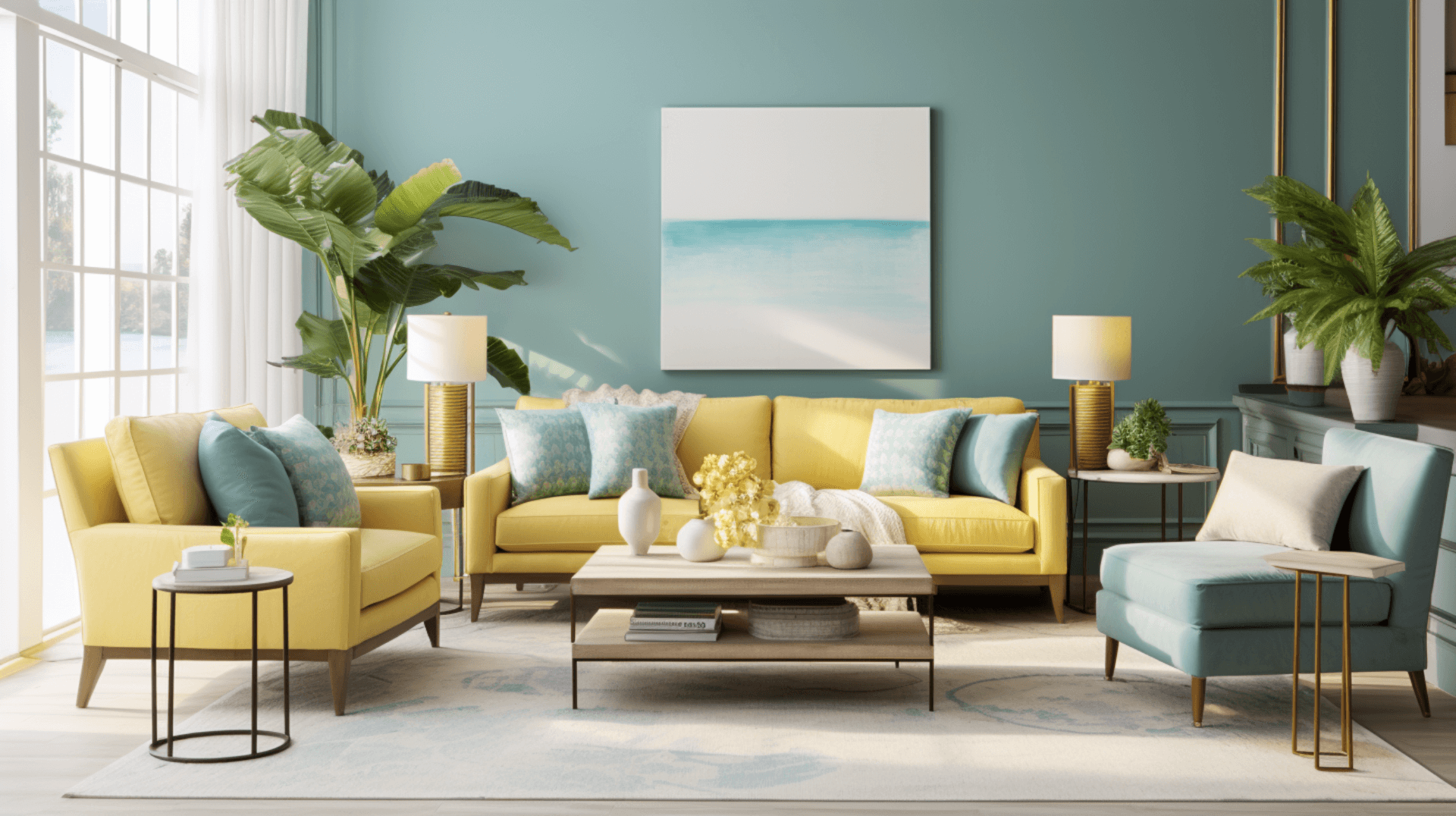
colour plays a significant role in creating the desired ambiance and atmosphere in a living room. By carefully selecting and incorporating colours, one can transform a dull space into an inviting haven.
This article will provide detailed guidance on how to use colour effectively to create an inviting living room vibe. It will explore various aspects such as:
- Choosing the right wall colour
- Selecting complementary furniture
- Adding accent colours with decorative accessories
- Incorporating texture for visual interest
- Creating a focal point with colour
- Creating a harmonious colour scheme
Furthermore, it will discuss techniques for making small spaces feel larger with colour, adding depth with colour gradients, and bringing nature indoors with earthy tones.
By following the informative and engaging advice provided in this article, readers will gain a deeper understanding of how to utilise colour to create a warm and welcoming living room environment.
Choosing the Right Wall colour
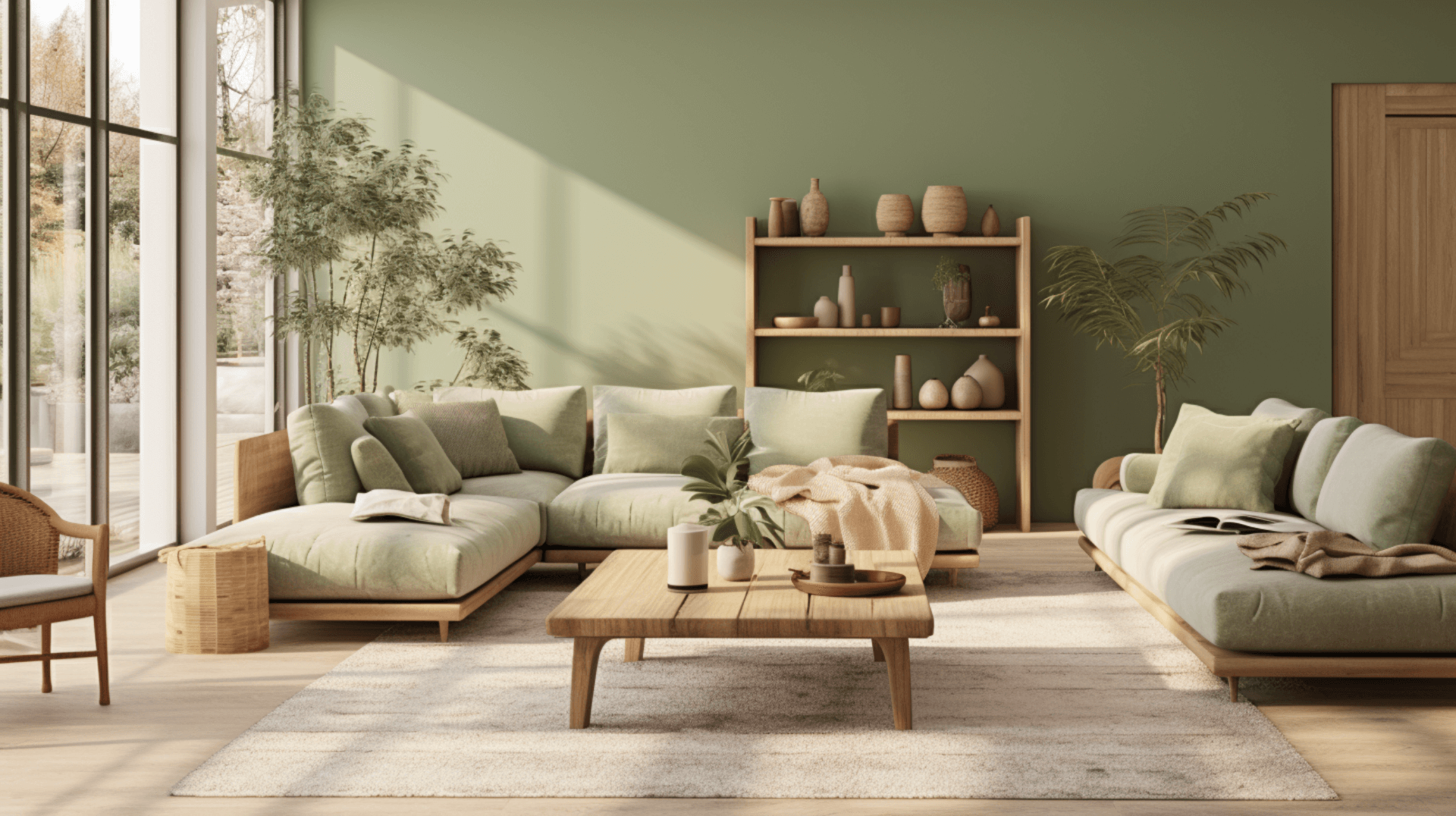
When selecting the appropriate wall colour for a living room, it is essential to consider various factors such as the room’s size, natural lighting, and desired ambiance.
The choice of wall colour can significantly impact the overall feel and atmosphere of the room. For smaller living rooms, lighter wall colours such as soft neutrals or pastels can create an illusion of space and make the room feel more open and airy. On the other hand, darker wall colours can add warmth and cosiness to larger living rooms.
Natural lighting is another crucial factor to consider when choosing wall colours. Rooms with ample natural light can handle bolder and brighter wall colours, while rooms with limited natural light may benefit from lighter shades to maximise brightness.
Ultimately, the desired ambiance of the living room should guide the decision-making process, whether it’s a relaxed and calming environment or a vibrant and energetic one.
Selecting Complementary Furniture
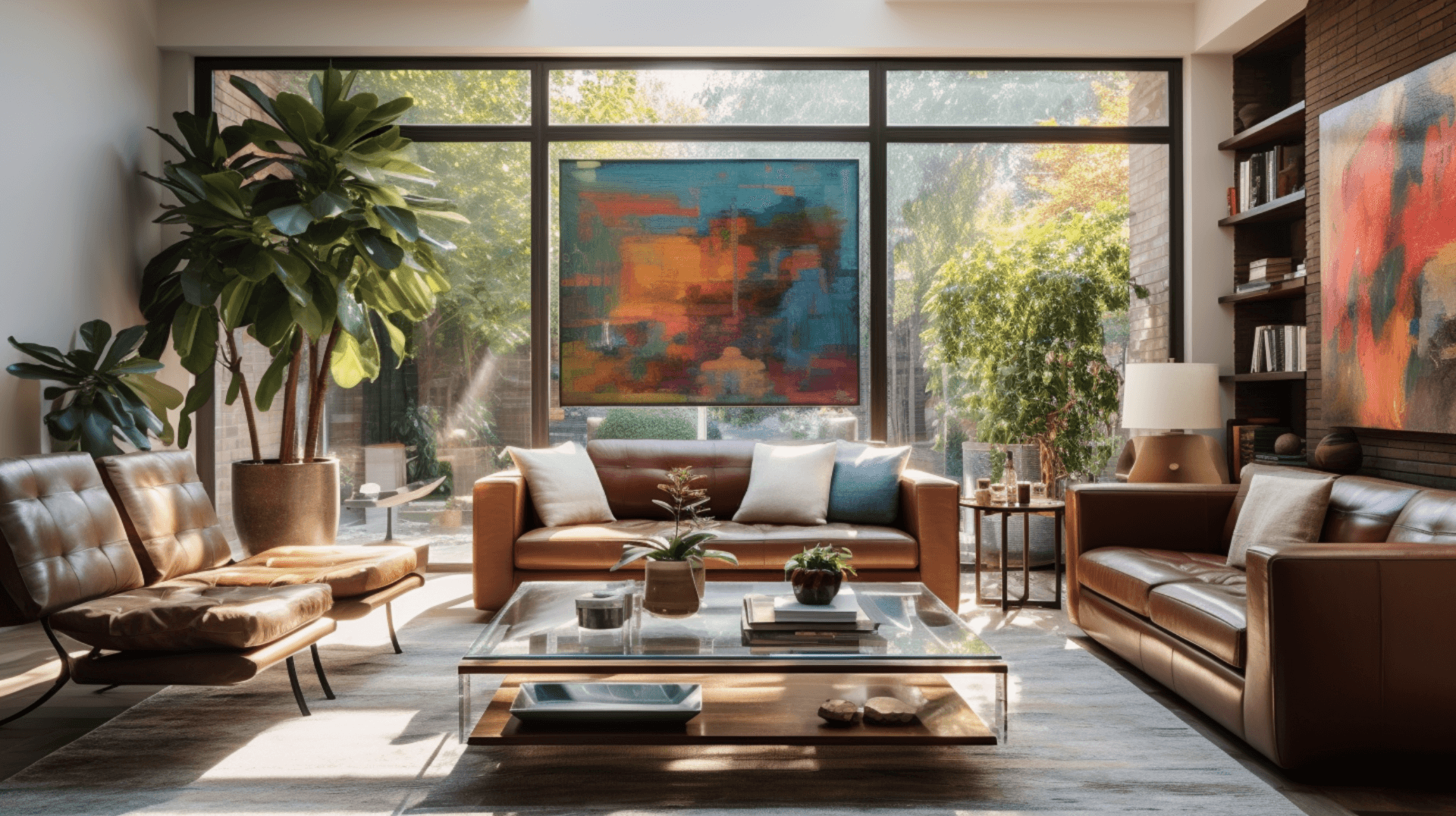
Selecting furniture that complements the chosen colour scheme is crucial in establishing an appealing ambiance in the living space. The furniture serves as a key element in creating a cohesive and harmonious visual appeal.
When choosing furniture, it is important to consider the colour palette and ensure that it complements the wall colour and other elements in the room. For example, if the walls are painted in a cool tone such as blue or grey, furniture in warm tones like beige or brown can add a sense of balance and cosiness. On the other hand, if the walls are in warm tones like red or orange, furniture in cool tones like white or grey can create a refreshing and modern look.
Additionally, the style and design of the furniture should also be considered to ensure it complements the overall aesthetic of the room. By carefully selecting complementary furniture, the living room can achieve an inviting and harmonious vibe.
Adding Accent colours with Decorative Accessories
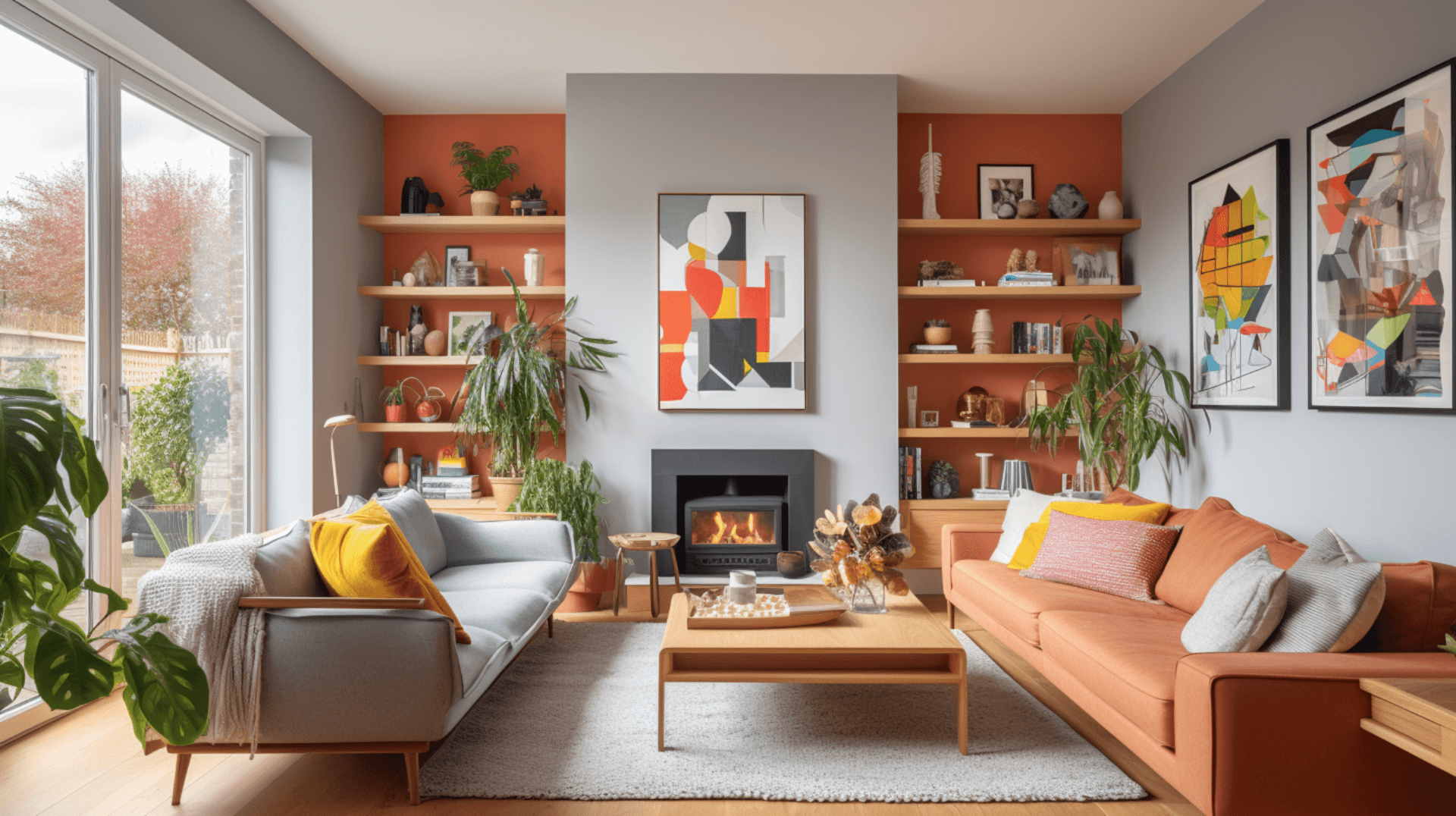
To enhance the visual interest and add a pop of colour to the living space, incorporating accent colours through decorative accessories can be an effective strategy. By strategically placing these accessories throughout the room, a cohesive and inviting atmosphere can be achieved.
Here are three ways to add accent colours with decorative accessories:
-
Throw pillows: Introducing vibrant throw pillows in complementary or contrasting hues can instantly liven up a neutral sofa or armchair. Opt for patterns or textures to create visual interest.
-
Artwork: Hanging colourful artwork on the walls can inject personality into the living room. Choose pieces that incorporate accent colours from the room’s colour palette to tie everything together.
-
Area rugs: A colourful area rug can serve as a focal point and anchor the space. Select a rug that features accent colours and patterns that complement the overall design scheme.
Remember, when incorporating accent colours with decorative accessories, it is essential to strike a balance and ensure that the colours harmonise with the existing colour scheme.
Incorporating Texture for Visual Interest
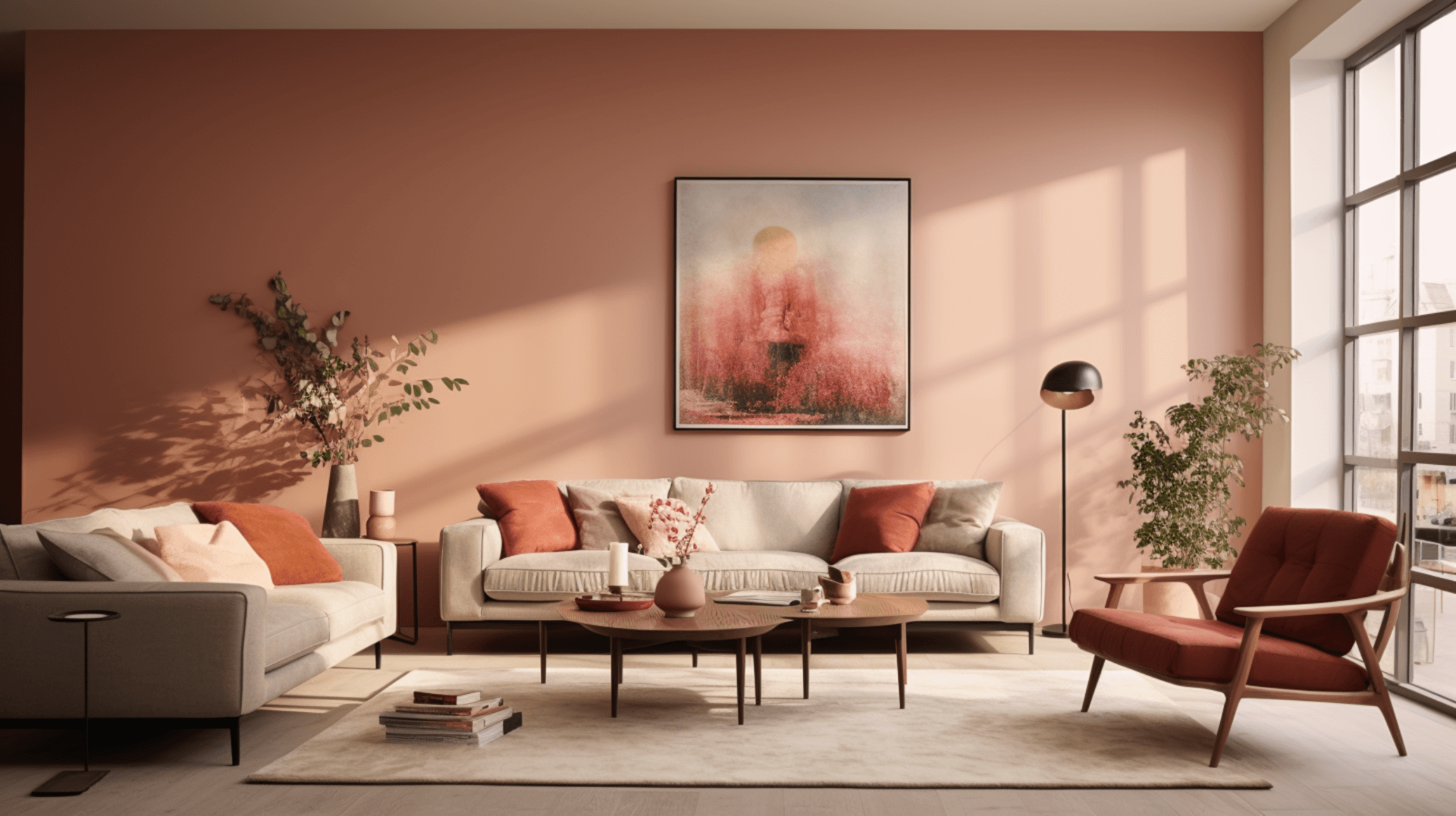
Incorporating texture into the decor can add depth and visual intrigue to the overall aesthetic of the space. Texture refers to the tactile quality of a surface or material, and it plays a significant role in creating a visually appealing living room.
There are various ways to introduce texture into the space. One option is to use textured wallpapers or paint finishes, such as faux finishes or textured paint techniques.
Another way is by incorporating textiles with different textures, such as velvet, linen, or woven fabrics. Adding textured rugs, cushions, or curtains can also enhance the visual interest of the room.
Additionally, using materials like wood, stone, or metal with distinct textures can bring a natural and tactile element to the space.
By incorporating texture, one can create a visually engaging living room that invites people to relax and enjoy their surroundings.
Creating a Focal Point with colour
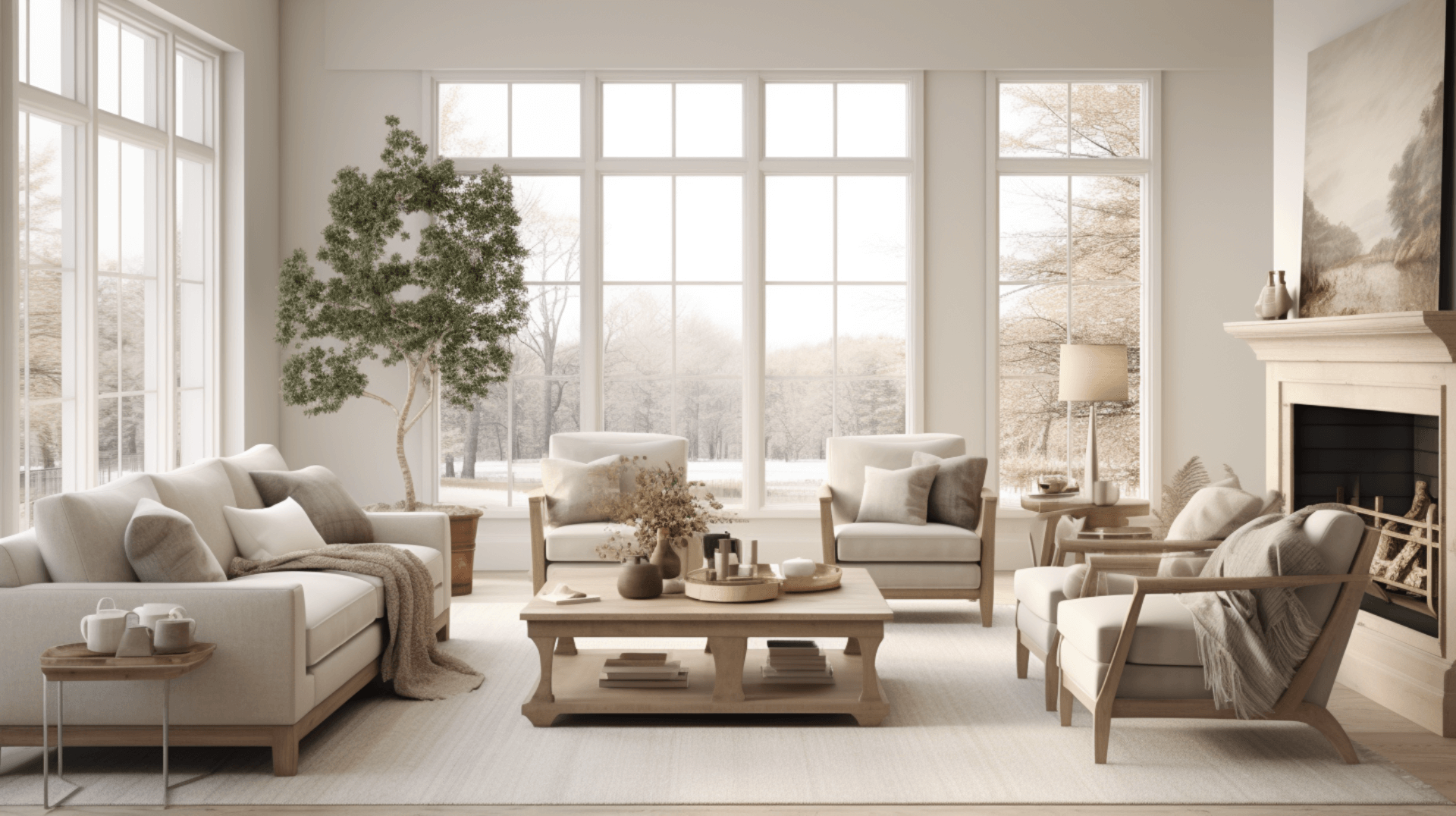
One effective way to establish a focal point in the living room is by strategically applying vibrant hues, drawing the viewer’s attention to a specific area and adding a dynamic element to the overall ambiance. By using colour to create a focal point, homeowners can create a visually engaging space that is inviting and aesthetically pleasing.
Here are some ways to create a focal point with colour:
-
Accent wall: Painting one wall in a bold and vibrant colour can instantly create a focal point in the living room, drawing attention to that specific area.
-
Statement furniture: Incorporating a piece of furniture in a standout colour can act as a focal point, such as a vibrant blue sofa or a bold red accent chair.
-
Artwork: Hanging a colourful and eye-catching piece of artwork on the wall can serve as a focal point, anchoring the room and adding visual interest.
-
Accessories: Using colourful accessories like throw pillows, rugs, or curtains can create a focal point and add pops of colour throughout the room.
By strategically incorporating colour, homeowners can effectively create a focal point in their living room, enhancing the overall ambiance and creating an inviting vibe.
Using Light and Dark Shades for Contrast
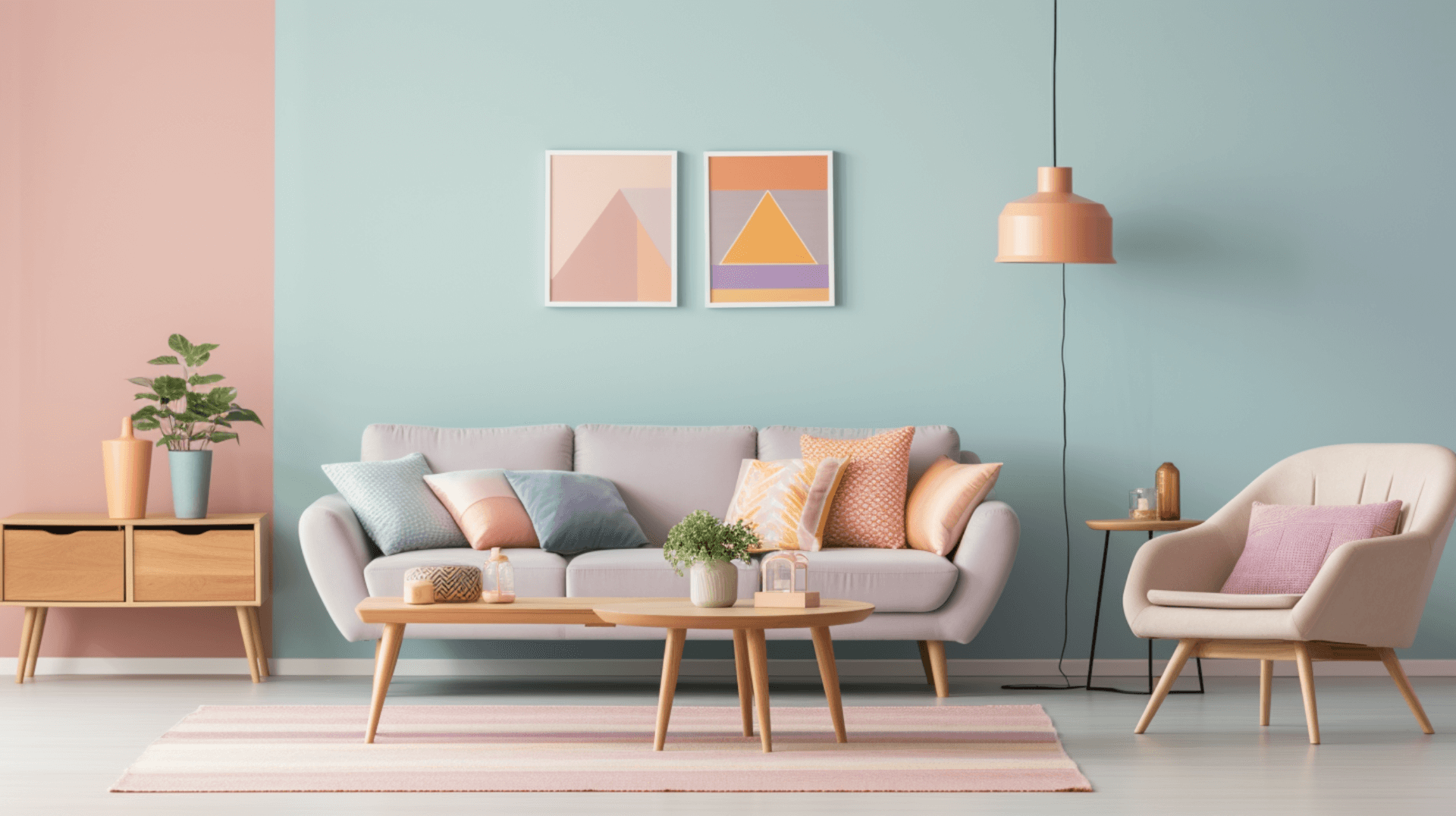
Contrasting light and dark shades can effectively enhance the visual appeal of a living space by creating a sense of depth and dimension. This technique is particularly useful in creating an inviting living room vibe.
By incorporating light and dark shades in the room’s colour scheme, one can achieve a striking contrast that adds visual interest and complexity to the space. Lighter shades, such as pastels or neutrals, can make the room feel spacious and airy, while darker shades, like deep blues or rich browns, can create a cosy and intimate atmosphere.
Additionally, the use of light and dark shades can help highlight specific elements in the room, such as furniture or artwork, by providing a backdrop that makes them stand out.
Overall, the careful use of contrasting light and dark shades can greatly contribute to creating an inviting and visually appealing living room.
Balancing Warm and Cool Tones
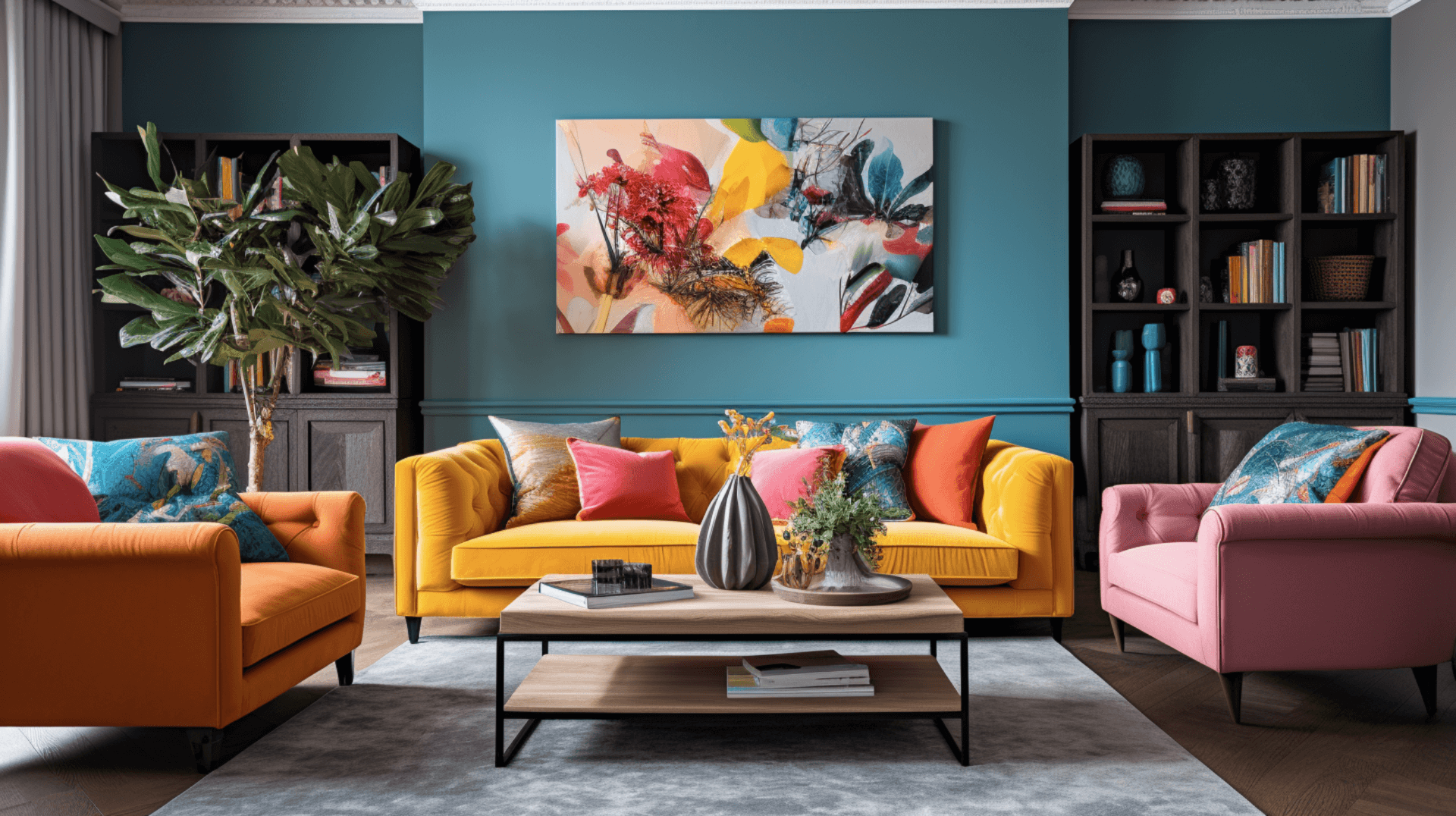
To achieve a harmonious and visually appealing living space, it is important to strike a balance between warm and cool tones in the colour scheme.
Warm tones, such as reds, oranges, and yellows, create a sense of cosiness and intimacy in a room. They can make a space feel inviting and welcoming.
On the other hand, cool tones, like blues, greens, and purples, have a calming effect and can make a room feel more spacious and airy.
When using warm and cool tones together, it is crucial to find the right balance. Too much warmth can make a room feel overwhelming and suffocating, while an excess of cool tones can create a sterile and uninviting atmosphere.
By carefully selecting and combining warm and cool colours, a living room can achieve a balanced and inviting vibe.
Embracing Neutral colours for a Calming Atmosphere
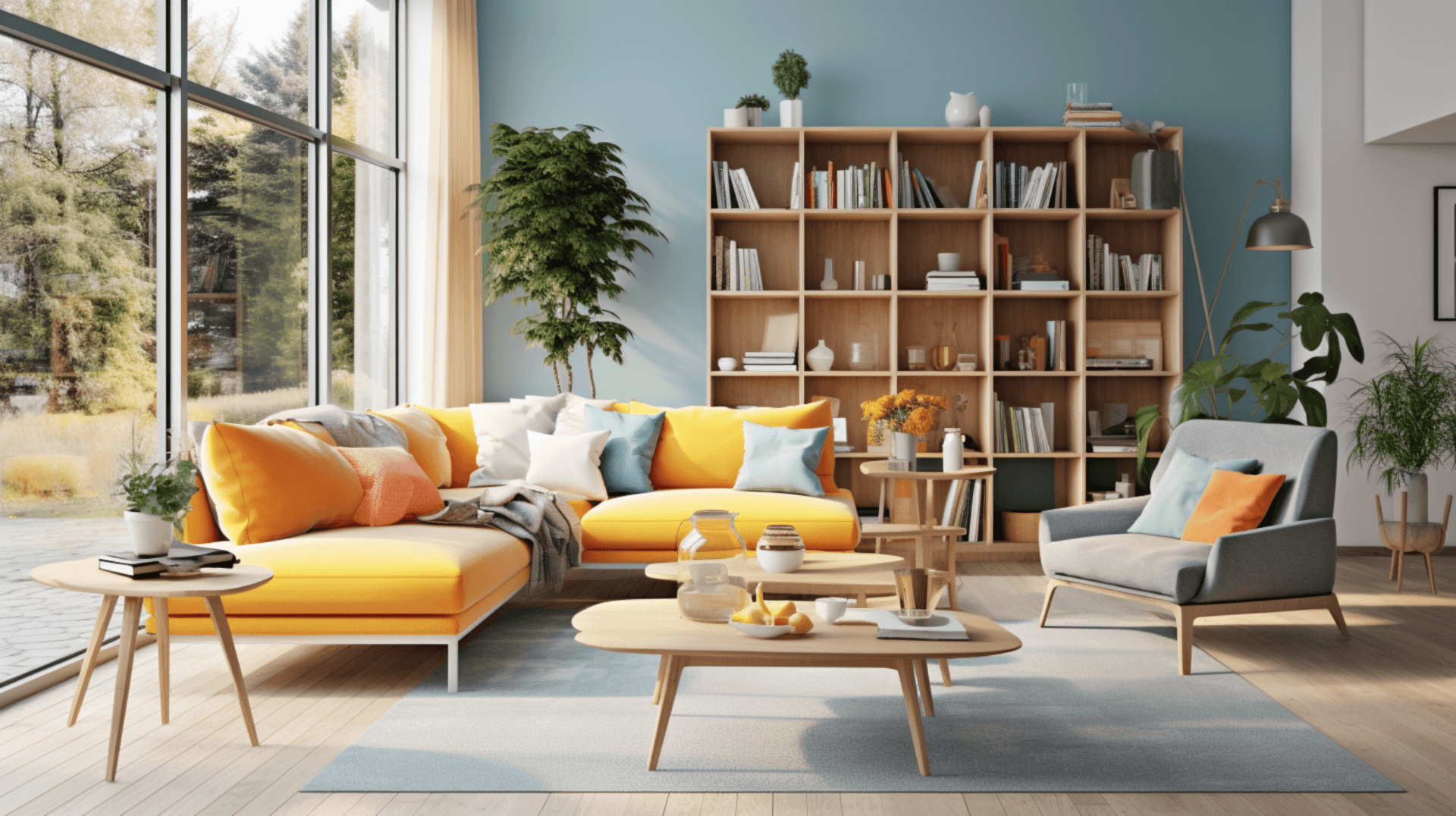
Neutral colours can be embraced in order to create a calming atmosphere in a living space. By incorporating these colours, homeowners can achieve a sense of tranquillity and relaxation.
Here are five ways to use neutral colours effectively:
-
Use light shades of beige or cream on the walls to create a soft and soothing backdrop.
-
Opt for furniture in neutral tones such as grey, taupe, or ivory, which will help create a cohesive and serene look.
-
Choose accessories in natural materials like wood or woven textures to add warmth and depth to the room.
-
Incorporate pops of colour through artwork or decorative accents to add visual interest without overwhelming the space.
-
Consider adding layers of texture through rugs, curtains, or throw pillows in neutral shades to create a cosy and inviting atmosphere.
By following these guidelines, individuals can create a living room that promotes relaxation and a peaceful ambiance.
Experimenting with colour Blocking
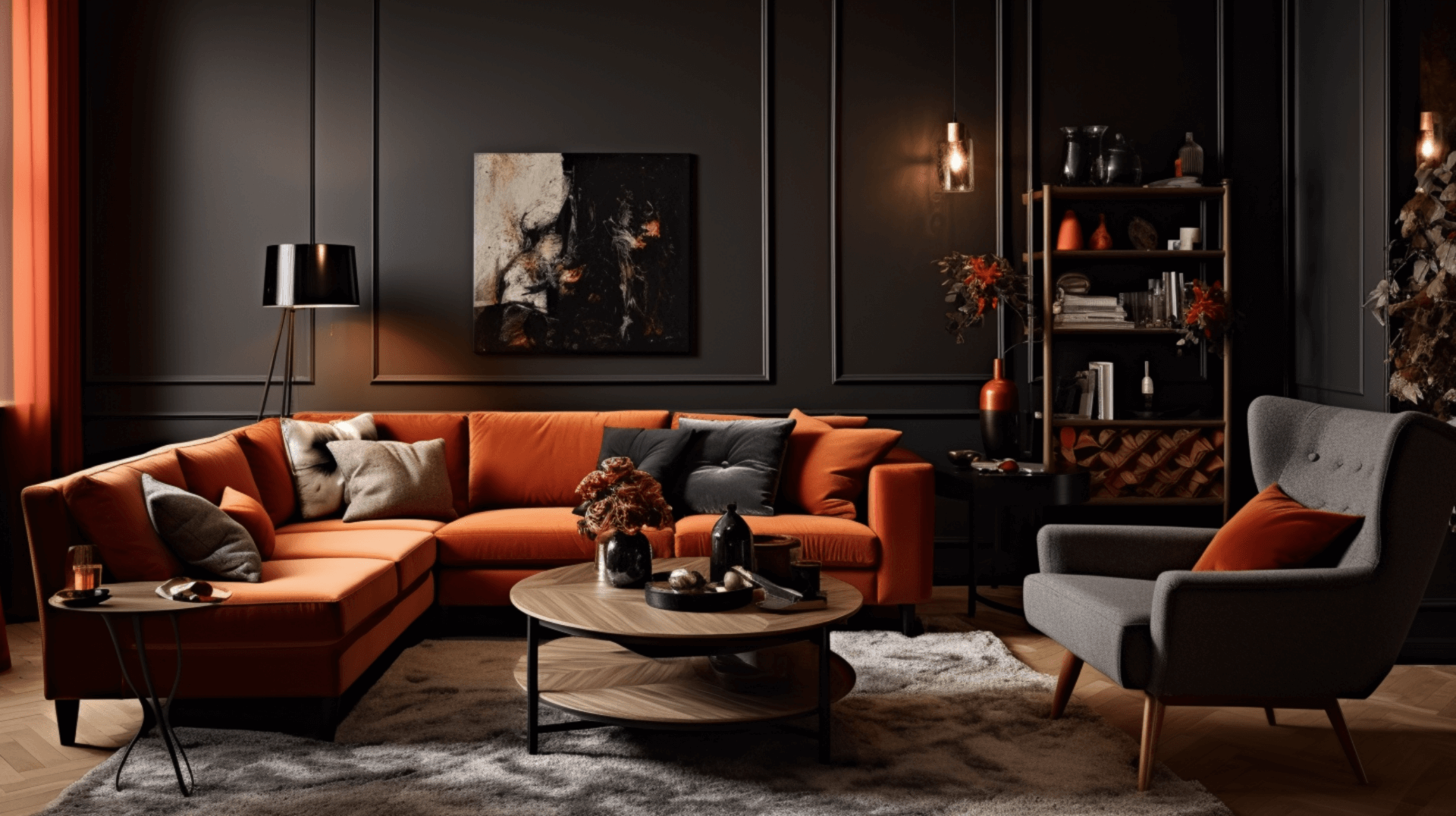
colour blocking is a contemporary design technique that involves the use of bold, contrasting hues to create visual interest and a dynamic atmosphere in a space. It can be an effective way to add excitement and personality to a living room.
By strategically placing blocks or sections of colour on walls, furniture, or accessories, a room can be transformed into a vibrant and visually striking space. When using colour blocking in a living room, it is important to consider the overall colour scheme and balance of the room.
Contrasting colours can be used to highlight specific areas or objects, while complementary colours can create a harmonious and cohesive look. The key is to experiment with different colour combinations and placements to find the perfect balance and create an inviting atmosphere in the living room.
Incorporating Patterns and Prints
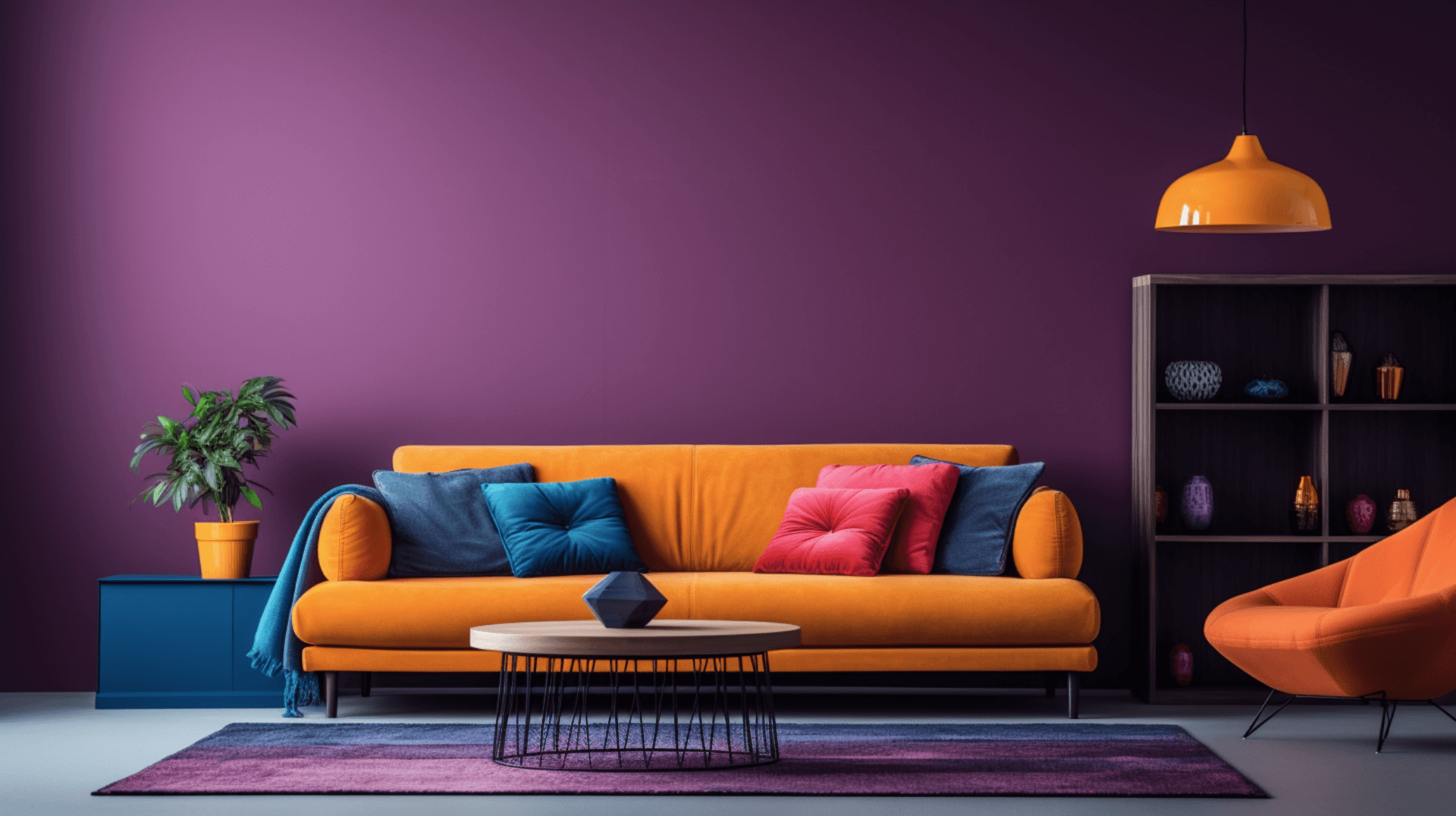
Patterns and prints can introduce a sense of dynamism and visual interest to the design of a living space, evoking a feeling of excitement and energy in the audience. By incorporating patterns and prints into the living room, one can create a vibrant and lively atmosphere.
There are various ways to incorporate patterns and prints into the design. One can use patterned upholstery for the furniture, such as a floral or geometric print, to add visual interest and depth. Additionally, one can use patterned curtains or drapes to create a focal point in the room. Another option is to use patterned rugs or throw pillows to add texture and visual appeal.
It is important to choose patterns and prints that complement each other and the overall colour scheme of the room. By carefully selecting and combining patterns and prints, one can create an inviting and visually captivating living room space.
Using colour Psychology to Set the Mood
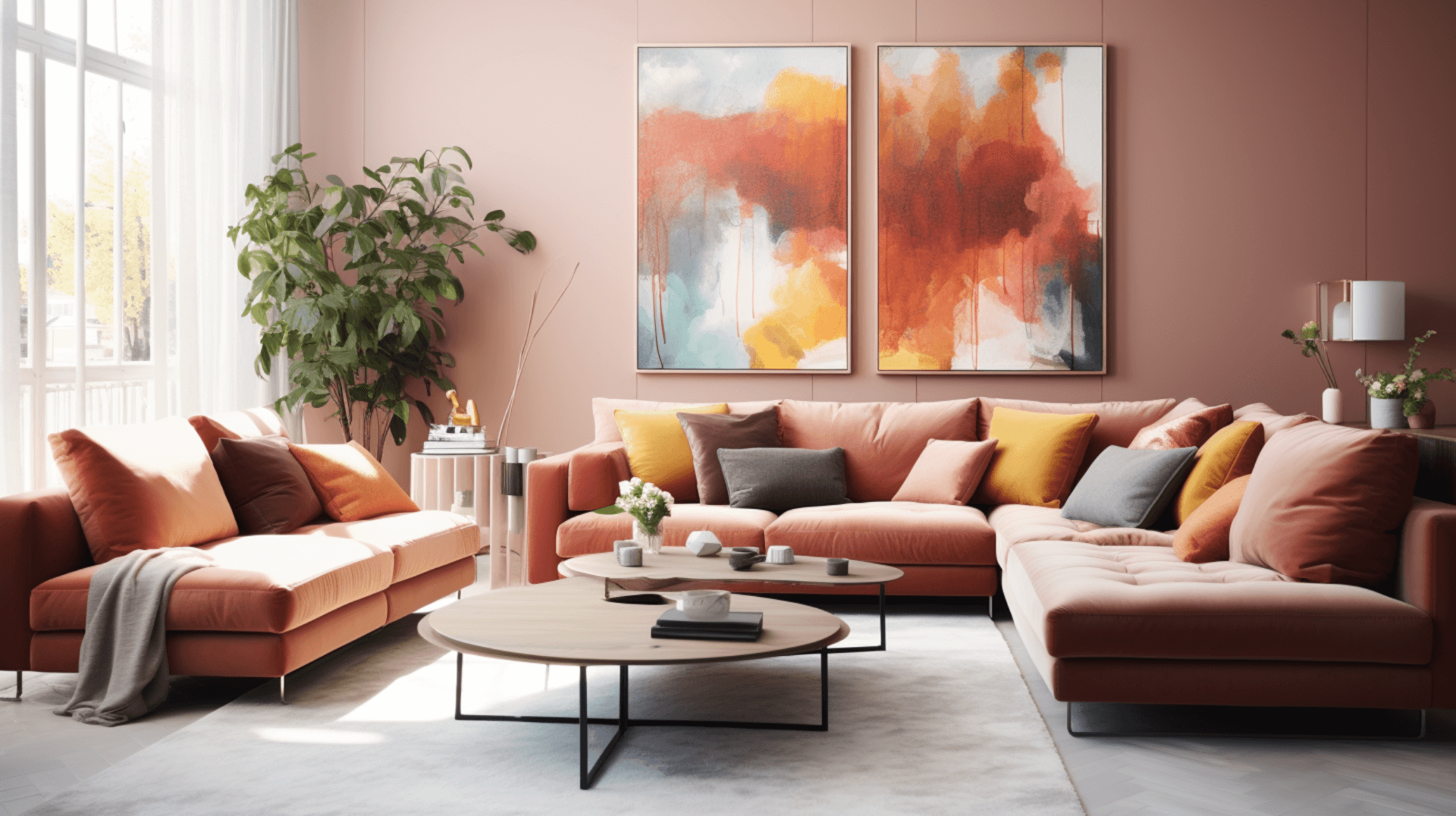
By understanding the psychological impact of different shades and hues, one can effectively manipulate the atmosphere of a space to elicit a desired emotional response from those who inhabit it.
colour psychology is the study of how colours can affect human behaviour and emotions.
In the context of a living room, the choice of colours can greatly influence the mood and ambiance of the space.
Warm colours such as red, orange, and yellow are known to evoke feelings of warmth, comfort, and energy. These hues are perfect for creating a cosy and inviting atmosphere.
On the other hand, cool colours like blue and green can promote a sense of calmness and relaxation, making them ideal for creating a tranquil and peaceful living room.
Additionally, neutral colours like beige, cream, and grey provide a versatile backdrop that can be easily paired with pops of colour or patterns to add visual interest.
Ultimately, the use of colour psychology in interior design allows homeowners to curate the perfect ambiance and mood for their living room.
Creating a Harmonious colour Scheme
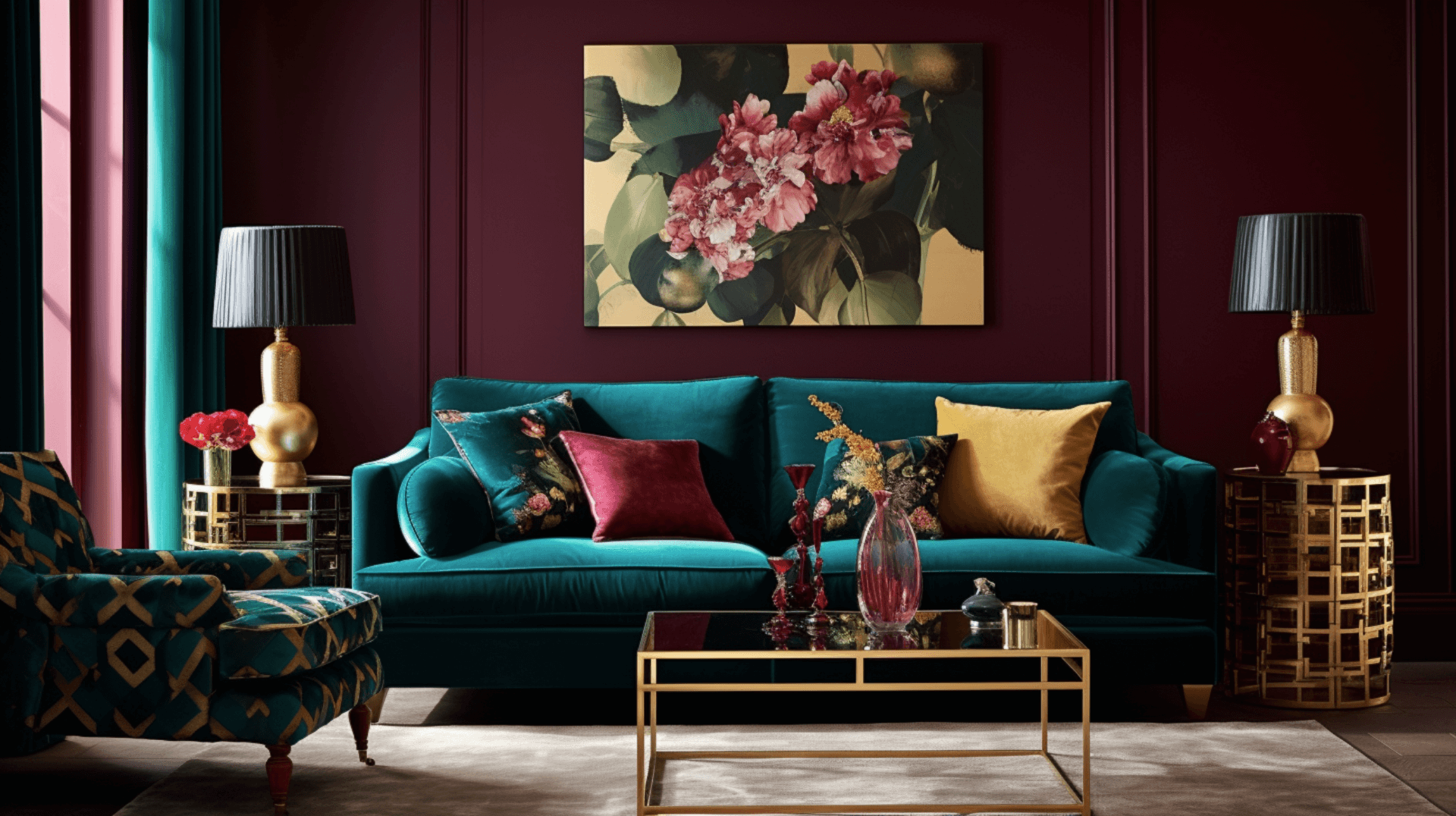
To establish a sense of visual harmony, it is crucial to carefully select a cohesive colour palette that complements the overall aesthetic of the space. Creating a harmonious colour scheme involves understanding the principles of colour theory and how different colours interact with each other.
One approach is to use the colour wheel, which organises colours in a way that helps identify complementary, analogous, or monochromatic schemes. Complementary colours, such as blue and orange or yellow and purple, create a vibrant and eye-catching contrast.
Analogous colours, such as different shades of green or blue, create a more calming and cohesive look.
Monochromatic schemes, which use different shades and tints of a single colour, can create a sophisticated and elegant atmosphere.
By carefully selecting and combining colours, a harmonious colour scheme can enhance the overall inviting vibe of a living room.
Making Small Spaces Feel Larger with colour
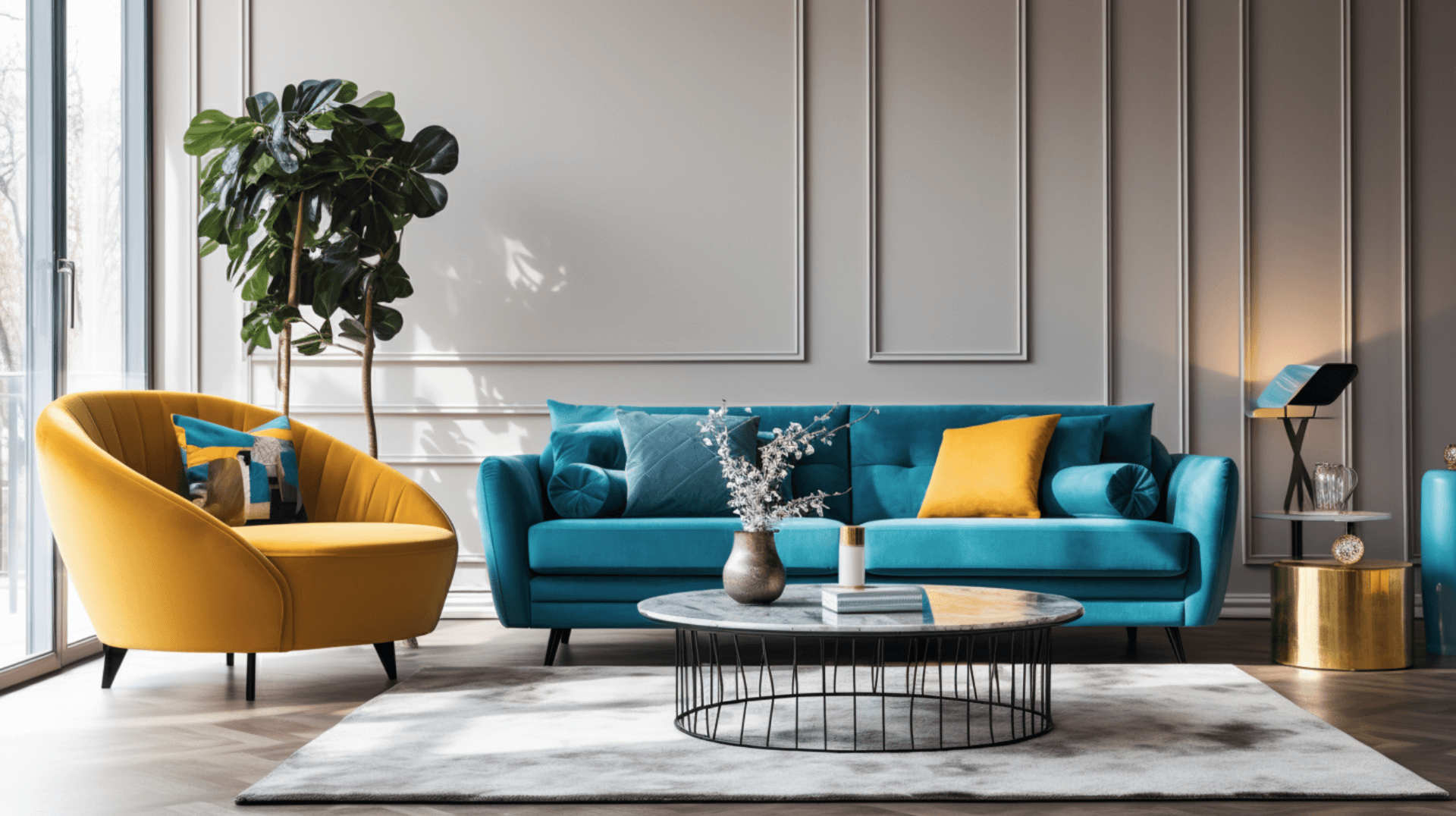
One effective strategy for maximising the perception of space in small areas involves utilising colour in a strategic manner. By carefully selecting and applying colours, it is possible to create an illusion of more space, making the room feel larger and more inviting.
Lighter colours, such as whites, pastels, and neutrals, tend to reflect more light, which creates an airy and open atmosphere. Painting the walls and ceilings in a light colour can make them recede, visually expanding the space.
Additionally, using a monochromatic colour schemewhere different shades and tones of the same colour are usedcan create a sense of continuity and flow, making the room appear larger.
It is also important to consider the flooring and furniture colours, opting for lighter shades to maintain the sense of spaciousness.
By employing these colour techniques, small living spaces can be transformed into inviting and expansive environments.
Adding Depth with colour Gradients
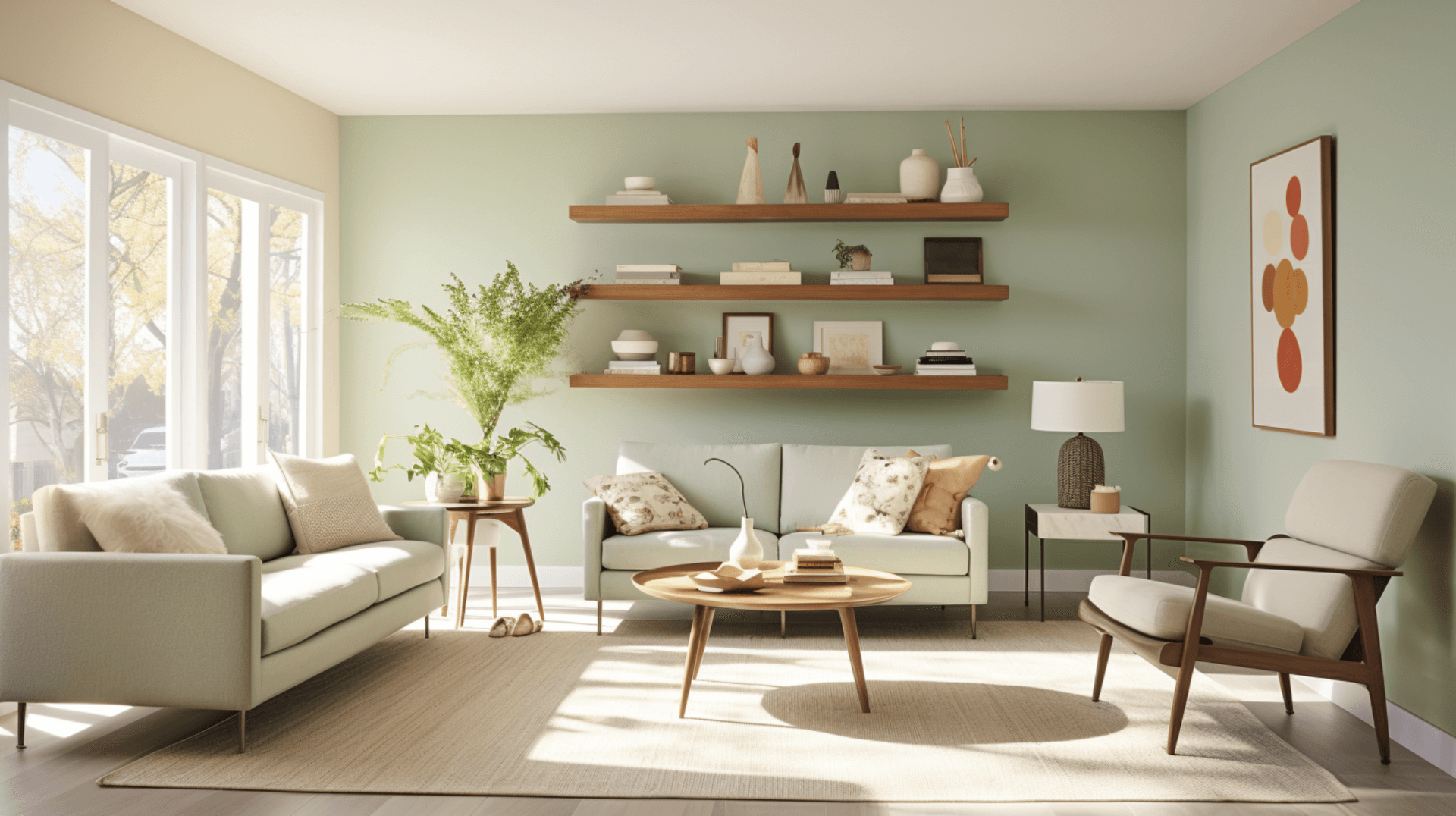
In the quest to make small spaces feel larger, colour plays a vital role. However, it is not just about using light or neutral colours; adding depth with colour gradients can be a game-changer. By incorporating colour gradients into your living room design, you can create an illusion of depth and dimension, making the space appear larger and more inviting.
Here are four key ways in which colour gradients can enhance the perception of depth in your living room:
-
Wall treatments: Using a gradient paint technique or wallpaper with a subtle gradient pattern can add depth to your walls.
-
Furniture selection: Opt for furniture pieces with gradient upholstery or consider layering different shades of the same colour for a visually appealing effect.
-
Textiles and accessories: Incorporate gradient curtains, rugs, throw pillows, and artwork to introduce depth and interest.
-
Lighting: Experiment with different lighting sources and intensities to highlight the colour gradients and create a sense of depth and ambiance.
By strategically incorporating colour gradients, you can transform your small living room into a visually captivating and inviting space.
Bringing Nature Indoors with Earthy Tones
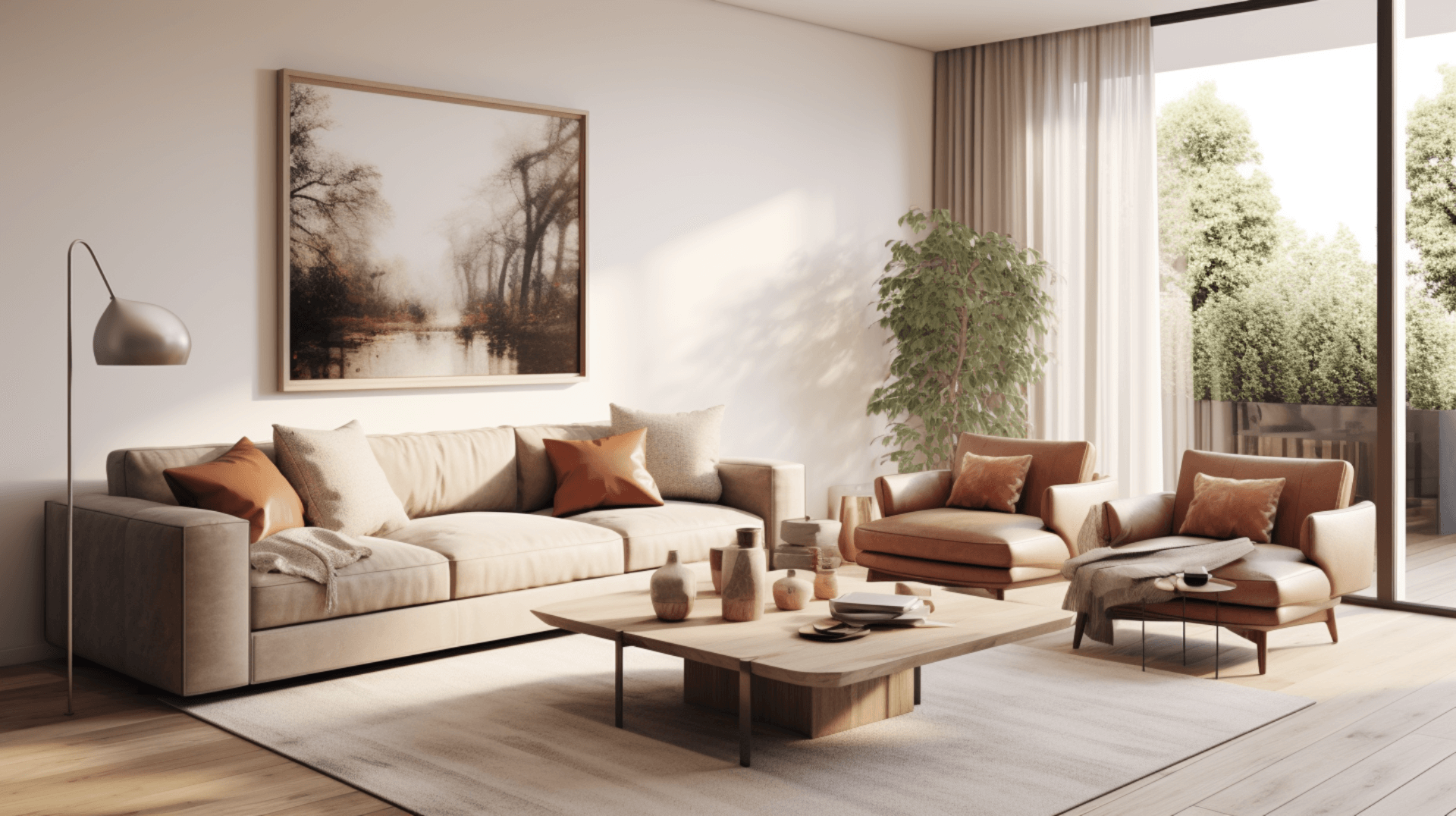
Bringing the soothing essence of the natural world inside, earthy tones evoke a sense of tranquillity and connection to the environment. These warm, natural hues, inspired by the colours found in nature, can transform a living room into a serene and inviting space. Earthy tones encompass shades of brown, green, and beige, creating a harmonious and grounding atmosphere.
One way to incorporate earthy tones into a living room is by choosing furniture and accessories in these colours. This can include earth-toned sofas, wooden coffee tables, and woven rugs in shades of brown and green. Additionally, incorporating natural elements such as plants and stones can further enhance the earthy vibe.
Another way to bring nature indoors is through the use of wall colours. Opting for earthy paint colours, such as warm browns or muted greens, can instantly create a calming and inviting ambiance in the living room. These colours can be further complemented with natural textures, such as exposed brick walls or wooden panelling.
Incorporating earthy tones into a living room can create a tranquil and inviting space. By connecting with nature through warm and natural hues, the living room becomes a sanctuary that promotes relaxation and harmony.
Conclusion
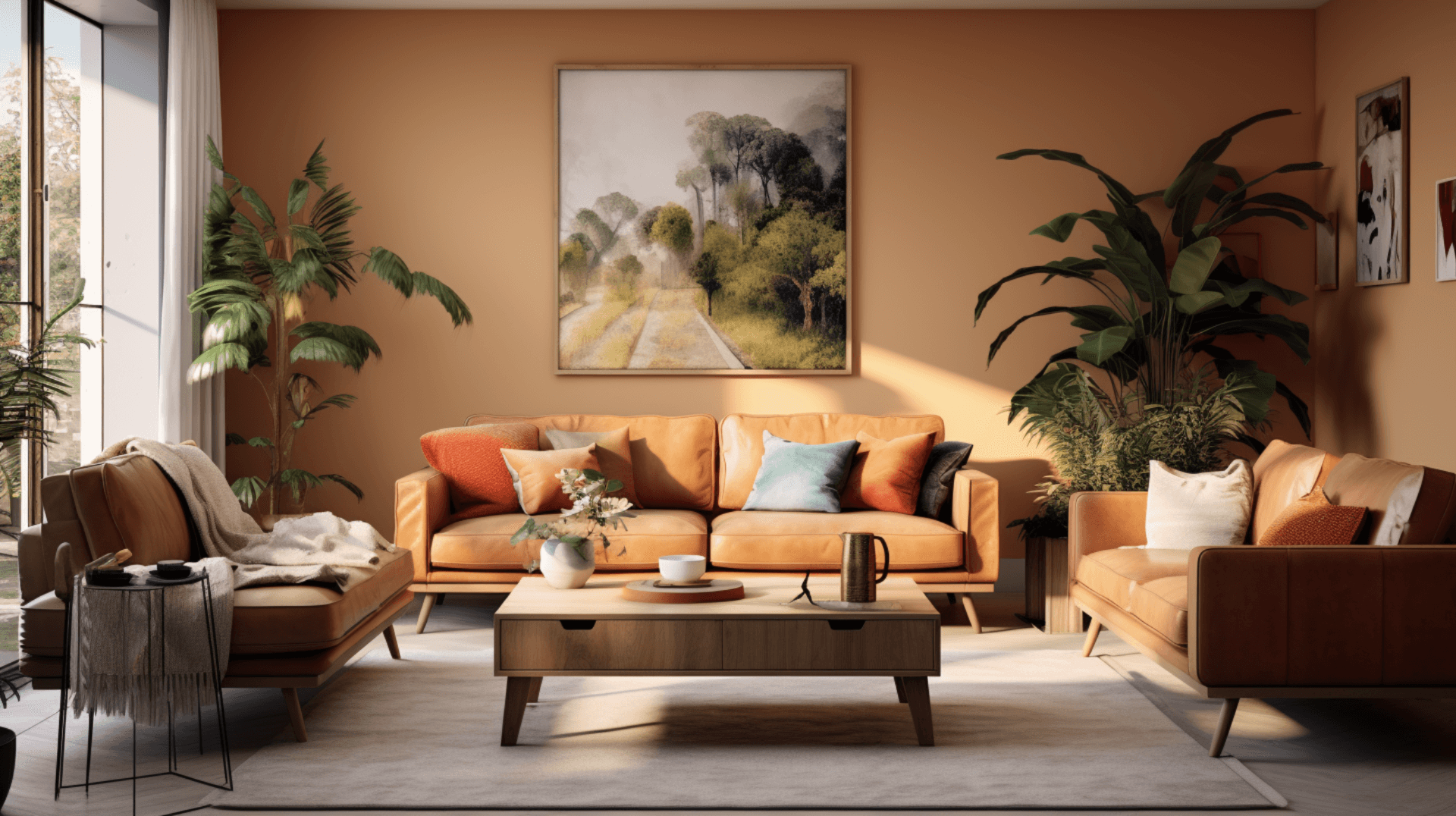
In conclusion, colour plays a crucial role in creating an inviting living room vibe. By carefully selecting the right wall colour, complementary furniture, and accent colours, you can transform your living space into a warm and welcoming environment.
Incorporating texture, creating a focal point, and using a harmonious colour scheme further enhance the overall aesthetic appeal.
Additionally, colour can be used strategically to make small spaces feel larger and add depth with colour gradients.
By bringing nature indoors with earthy tones, you can create a tranquil and serene atmosphere in your living room.


